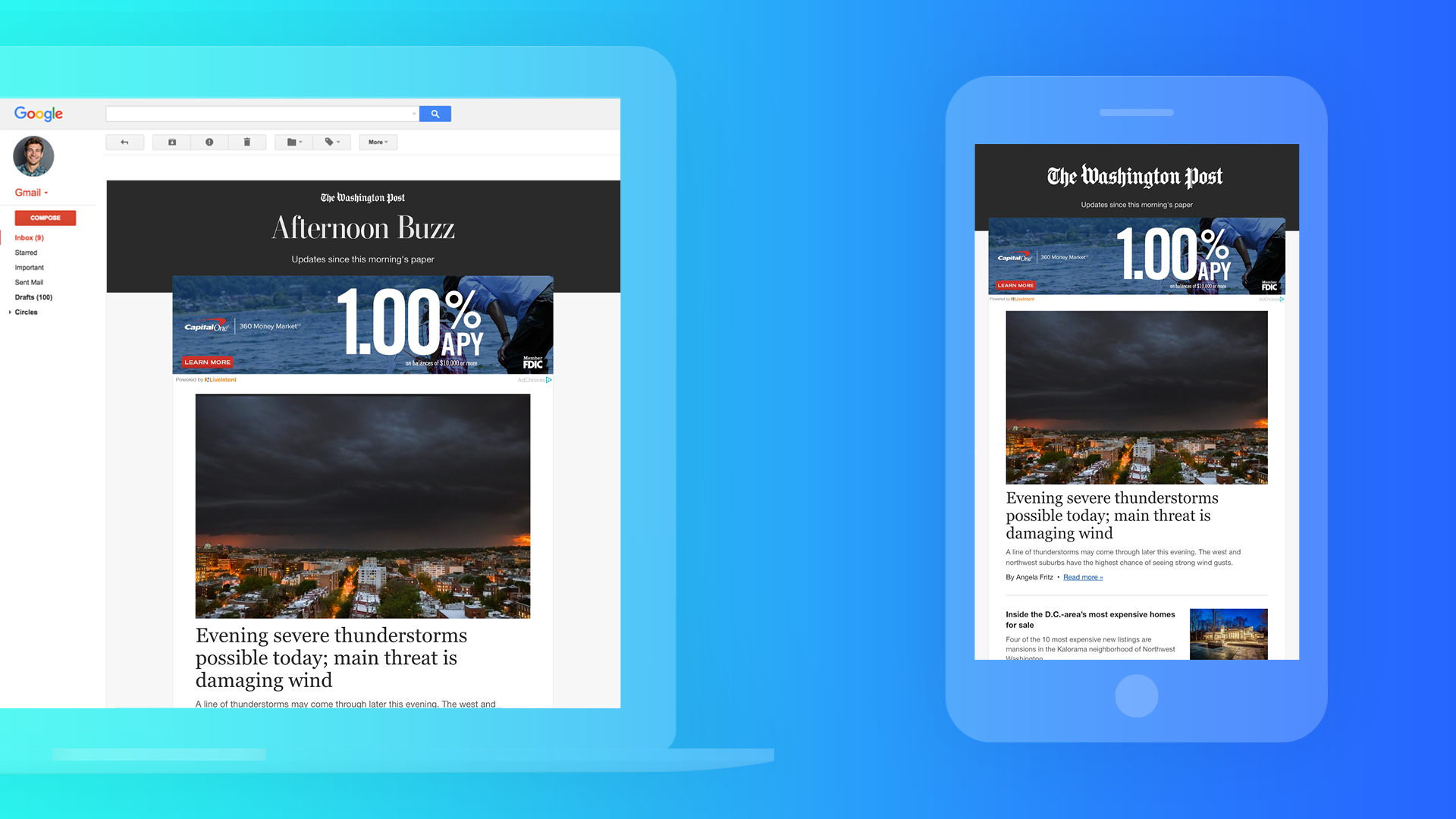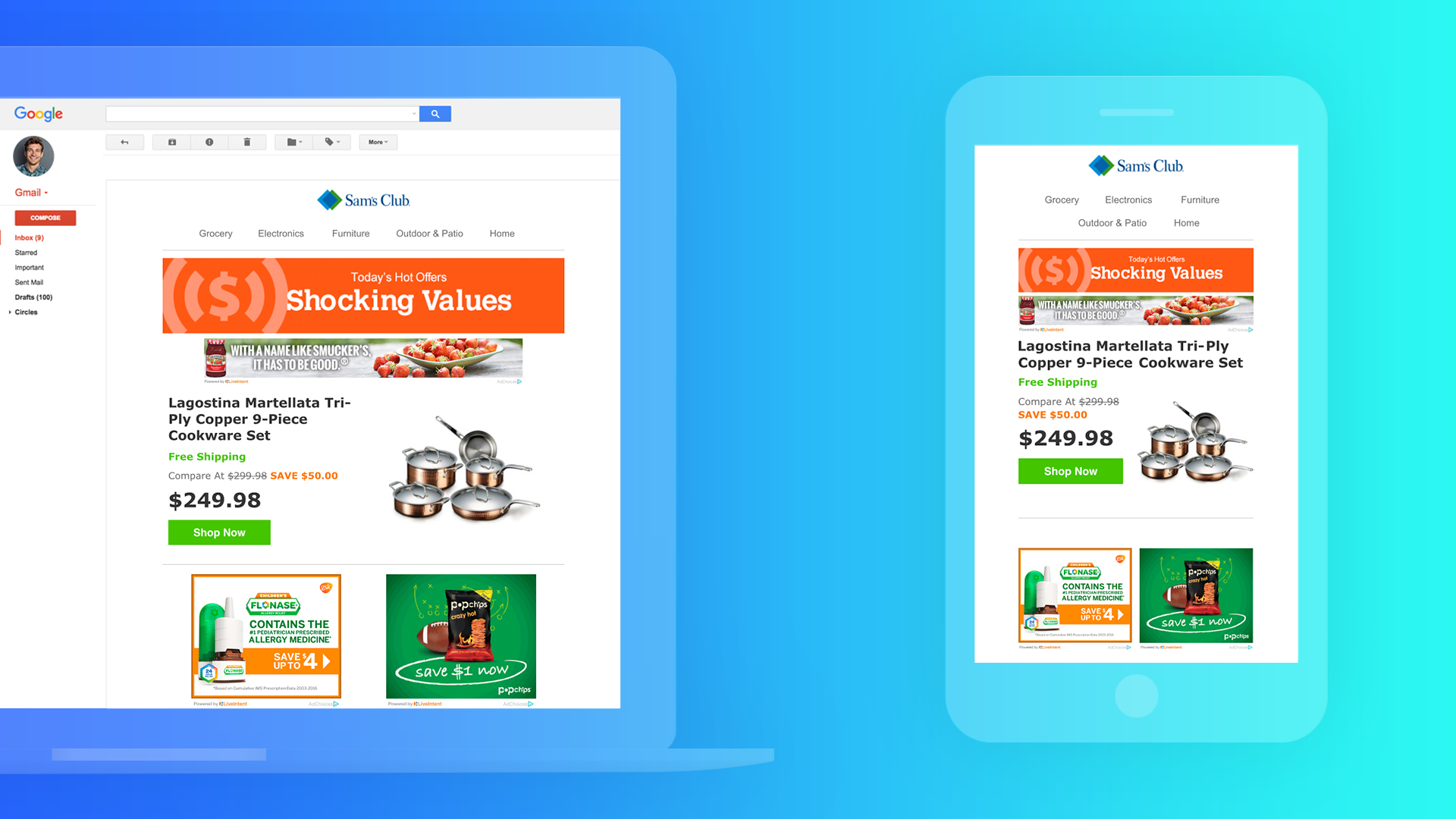There’s a reason why Lena Dunham launched an email newsletter instead of just a blog, and why a tiny email community called theSkimm grew to grab the attention of celebrities like Oprah Winfrey, Trevor Noah, and Sarah Jessica Parker.
Why? Because people love using email.
Email is projected to surpass 3.7 billion users in 2017, according to a Return Path study. That’s almost half the world’s population. With stats like these, marketers know they have a huge opportunity to engage readers and build communities through their inboxes. In fact, 63% of content marketers say email is one of their top marketing tactics.
Still, brands don’t have to give away their email content for free. By using the right template and design, they can seamlessly incorporate ads into their newsletters, enhancing the consumer experience and driving revenue back to the company.
Let’s look at how three major brands – The Washington Post, Betty Crocker, and Sam’s Club – do just that.
1. The Washington Post
The Washington Post runs 70 different email newsletters. While its main goal is to drive digital subscriptions, it adds another layer to this business model by incorporating ads into its emails.
Specifically, the publication uses a range of different formats, including native ad units, traditional IAB units, and sponsored email headers.
Take the “Afternoon Buzz” newsletter, for example. It delivers a sampling of the biggest stories to emerge since the morning paper. And right at the top under the headline is a marquee ad sponsored as seen below.
It’s easy to consume, and it doesn’t interrupt the flow of the newsletter. The reader can simply decide to click or keep scrolling. The ad is also compatible with mobile, which is crucial because mobile drives more than half of all consumer traffic to top U.S. websites.
With a strong mobile ad strategy, The Washington Post can drive more value from its emails and grab readers’ attention in new and innovative ways.

2. Betty Crocker
As a 95-year-old brand, Betty Crocker thrives on building long-term relationships with its customers. The company has done this with catalogs, cookbooks, and recipes – and it’s also doing it with email.
Betty Crocker’s daily newsletter doesn’t just delight customers with timely specials and “cookie hacks.” It also uses marquee ads to let readers know about relevant products from other General Mills brands, such as Toaster Strudel.
Below that, two 300 x 250 ad units offer additional messaging from other brands that appeal to readers’ interests. This flow ensures that multiple ads can be displayed without compromising audience trust and engagement.
Betty Crocker knows that customers can easily shift from passionate to passive if you don’t nurture your connection with them. That’s why email helps to keep its almost century-old name going strong.

3. Sam’s Club
Sam’s Club is in an interesting spot. Its email subscribers are already part of an exclusive community of shoppers who’ve opted into the warehouse’s offers. That’s why the brand uses its email to deliver even more value to these members and drive sales online and in stores.
To do this, Sam’s Club integrates “Shop now” buttons, product ads, exclusive coupons, and relevant promotions directly into its newsletters. It also matches logos, colors, and fonts with its website, so users can easily transition from their inbox to their online shopping cart.
With the template ready to go, Sam’s Club can simply accept payments from suppliers who want to buy premium ad space. It’s a win-win situation – the merchant enjoys exposure and increased sales, and Sam’s Club pockets the revenue. In fact, by using its template of three ad units, Sam’s Club has found that total revenue per open can reach up to $10.

Level-up your email strategy
It’s time to take your email strategy to the next level. And the good news is that you don’t have to start from scratch. There are tried-and-true design templates you can use from some of the best in the business.
As these brands prove, you can marry intuitive ad experiences with engaging editorial content to build a newsletter that drives revenue and keeps audiences coming back for more.
Like what you read? Download the white paper for more details and information on email template strategies and best practices.

The post How 3 Major Brands Created Ad-Friendly Email Newsletters appeared first on LiveIntent Blog.

